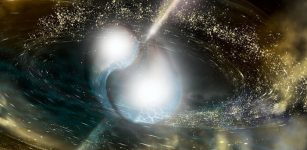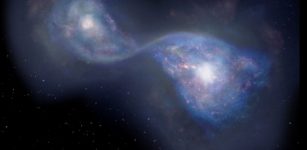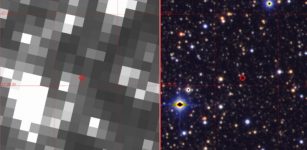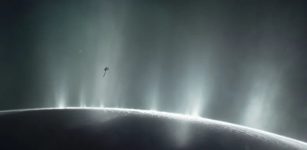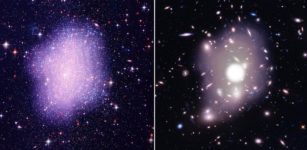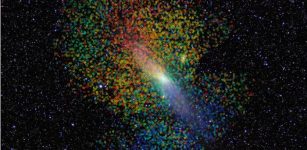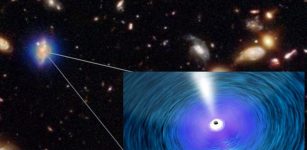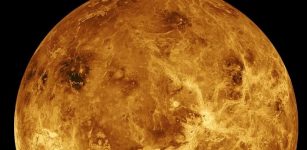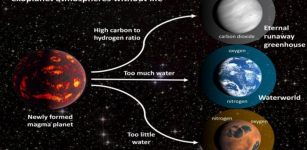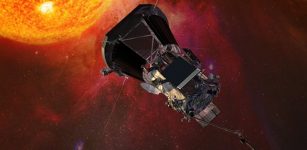Black Hole Shredding A Star Observed By Astronomers
Eddie Gonzales Jr. – MessageToEagle.com – For the first time, NASA’s planet-hunting Transiting Exoplanet Survey Satellite (TESS) watched a black hole tear apart a star in a cataclysmic phenomenon called a tidal disruption event.
“TESS data let us see exactly when this destructive event, named ASASSN-19bt, started to get brighter, which we’ve never been able to do before,” said Thomas Holoien, a Carnegie Fellow at the Carnegie Observatories in Pasadena, California.
“Because we identified the tidal disruption quickly with the ground-based All-Sky Automated Survey for Supernovae (ASAS-SN), we were able to trigger multiwavelength follow-up observations in the first few days. The early data will be incredibly helpful for modeling the physics of these outbursts.”
 An artist’s depiction of a star close to a rapidly spinning supermassive black hole. The gravitational pull of the black hole rips the star apart in what is known as a tidal disruption event. Image via Wikimedia Commons.
An artist’s depiction of a star close to a rapidly spinning supermassive black hole. The gravitational pull of the black hole rips the star apart in what is known as a tidal disruption event. Image via Wikimedia Commons.
ASAS-SN, a worldwide network of 20 robotic telescopes headquartered at Ohio State University (OSU) in Columbus, discovered the event on Jan. 29. TESS, however, didn’t need a call to action because it was already looking at the same area. The planet hunter monitors large swaths of the sky, called sectors, for 27 days at a time. This lengthy view allows TESS to observe transits, periodic dips in a star’s brightness that may indicate orbiting planets.
ASAS-SN began spending more time looking at TESS sectors when the satellite started science operations in July 2018. The first TESS data on the tidal disruption was not available until March 13. This is why obtaining early follow-up observations of these events depends on coordination by ground-based surveys like ASAS-SN.
“The early TESS data allow us to see light very close to the black hole, much closer than we’ve been able to see before,” said Patrick Vallely, a co-author and National Science Foundation Graduate Research Fellow at OSU. “They also show us that ASASSN-19bt’s rise in brightness was very smooth, which helps us tell that the event was a tidal disruption and not another type of outburst, like from the center of a galaxy or a supernova.”
Holoien’s team used UV data from Swift — the earliest yet seen from a tidal disruption — to determine that the temperature dropped by about 50%, from around 71,500 to 35,500 degrees Fahrenheit (40,000 to 20,000 degrees Celsius), over a few days. It’s the first time such an early temperature decrease has been seen in a tidal disruption before, although a few theories have predicted it, Holoien said.
Astronomers think the supermassive black hole that generated ASASSN-19bt weighs around 6 million times the Sun’s mass. It sits at the center of a galaxy called 2MASX J07001137-6602251 located around 375 million light-ye
Original story – here
Written by Eddie Gonzales Jr. – MessageToEagle.com Staff

